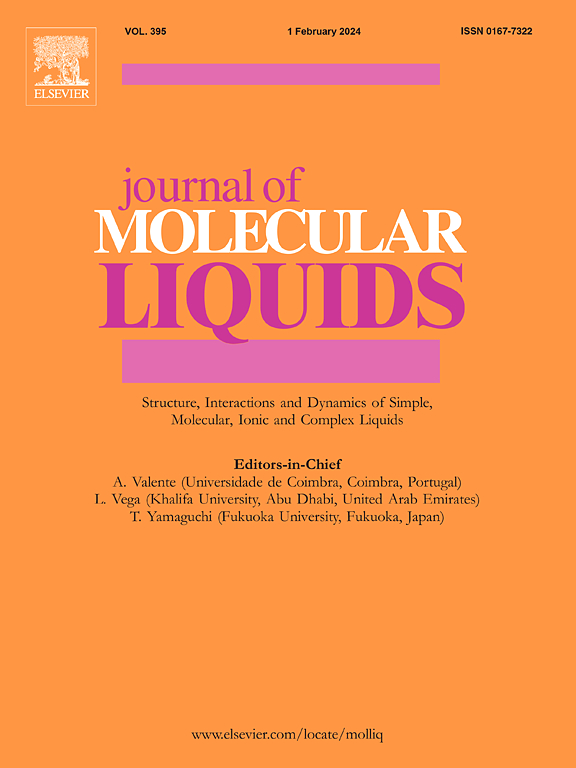Structural insights into nanofibers formed by templated polymerization-induced self-assembly through combined SANS and AFM characterizations
IF 5.3
2区 化学
Q2 CHEMISTRY, PHYSICAL
引用次数: 0
Abstract
This study combines Small-Angle Neutron Scattering (SANS) and Atomic Force Microscopy (AFM) to elucidate the formation and structural characteristics of poly(N,N-dimethyl acrylamide)-block-poly(2-methoxyethyl acrylate) (PDMAc-b-PMEA) block copolymer nanofibers prepared in water by the recently developed “Templated Polymerization-Induced Self-Assembly (PISA)” approach. The key feature of this technology is the use of a water-soluble macromolecular RAFT agent functionalized by a bisurea sticker (PDMAc-U2). During the generation of the PMEA block, through reversible addition-fragmentation chain transfer (RAFT) radical dispersion polymerization, the bisurea sticker is believed to promote the 1D assembly of the block copolymers via directional H-bonding into colloidal nanofibers. In this work, Small Angle Neutron Scattering (SANS) experiments show that anisotropic objects already form at the very early stages of polymerization, then, in the course of polymerization, their diameter increases concomitantly with the increase of the PMEA chain length. Furthermore, the SANS data reveal that the nanofibers are organized in a PMEA-core/ PDMAc-shell, which was previously hypothesized but not demonstrated. Atom Force Microscopy (AFM) supported these findings through local differences in mechanical properties and detailed visualization of the nanofibers’ internal structure. The combination of SANS and AFM results allowed us to corroborate the formation and internal structure of anisotropic particle obtained by the templated PISA approach. We believe that these nanostructured materials dispersed in aqueous solutions have potential for biomedical applications, while nanopatterning applications can be envisioned after deposition on surfaces.

求助全文
约1分钟内获得全文
求助全文
来源期刊

Journal of Molecular Liquids
化学-物理:原子、分子和化学物理
CiteScore
10.30
自引率
16.70%
发文量
2597
审稿时长
78 days
期刊介绍:
The journal includes papers in the following areas:
– Simple organic liquids and mixtures
– Ionic liquids
– Surfactant solutions (including micelles and vesicles) and liquid interfaces
– Colloidal solutions and nanoparticles
– Thermotropic and lyotropic liquid crystals
– Ferrofluids
– Water, aqueous solutions and other hydrogen-bonded liquids
– Lubricants, polymer solutions and melts
– Molten metals and salts
– Phase transitions and critical phenomena in liquids and confined fluids
– Self assembly in complex liquids.– Biomolecules in solution
The emphasis is on the molecular (or microscopic) understanding of particular liquids or liquid systems, especially concerning structure, dynamics and intermolecular forces. The experimental techniques used may include:
– Conventional spectroscopy (mid-IR and far-IR, Raman, NMR, etc.)
– Non-linear optics and time resolved spectroscopy (psec, fsec, asec, ISRS, etc.)
– Light scattering (Rayleigh, Brillouin, PCS, etc.)
– Dielectric relaxation
– X-ray and neutron scattering and diffraction.
Experimental studies, computer simulations (MD or MC) and analytical theory will be considered for publication; papers just reporting experimental results that do not contribute to the understanding of the fundamentals of molecular and ionic liquids will not be accepted. Only papers of a non-routine nature and advancing the field will be considered for publication.
 求助内容:
求助内容: 应助结果提醒方式:
应助结果提醒方式:


